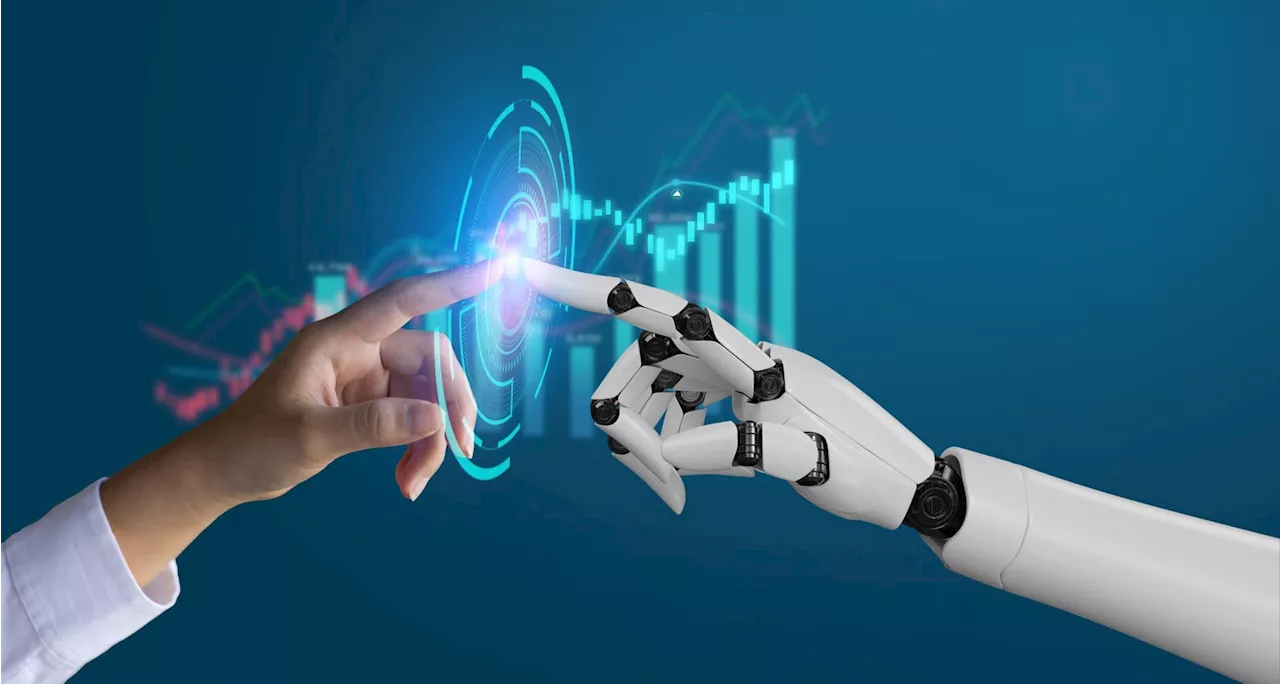This article delves into the challenges and advancements in developing self-driving airplanes, highlighting the crucial role of AI, probabilistic models, and human expertise in ensuring safety and efficiency. It explores how researchers like Professor Mykel Kochenderfer at Stanford University are tackling real-world complexities such as randomness, imperfect sensors, and modeling future uncertainty.
We have all heard about autonomous vehicles, especially self-driving cars.
But did you know that many of the same principles apply to self-driving airplanes? As the era of autonomous transportation becomes a reality, critical questions about safety and decision-making arise: How do algorithms account for randomness in autonomous systems like cars and aircraft? How do these systems ensure safety during unpredictable circumstances? How do imperfect sensors impact overall vehicle safety? How is future uncertainty modeled? And, importantly, how can artificial intelligence (AI) be trained to handle rare, high-stakes scenarios? To explore these questions, I interviewed Mykel Kochenderfer, an Associate Professor of Aeronautics and Astronautics and Associate Professor, by courtesy, of Computer Science at Stanford University and Director of the Stanford Intelligent Systems Laboratory (SISL). Professor Kochenderfer’s work centers on creating advanced algorithms and analytical methods for decision-making in dynamic, uncertain environments. His team focuses on high-stakes systems like air traffic control, unmanned aircraft, and automated vehicles, where safety and efficiency are paramount. By leveraging probabilistic models and optimization techniques, they aim to design robust systems capable of adapting to real-world variability.When asked about randomness in autonomous systems, Professor Kochenderfer highlighted the inherent variability of real-world environments. “The systems we build, whether for aircraft or cars, need to interact with the real world,” he explained. “And the real world has a tremendous amount of variability. There are other drivers on the road and pedestrians, and there is this inherent randomness. People don’t always walk straight. Cars don’t always follow the speed limit.” To account for this, the team uses probabilistic models that assign different weights to possible outcomes, optimizing decision-making strategies based on these probabilities. For example, “Most of the time, aircraft fly straight, but sometimes they turn left or right. It’s important to weigh the different possible futures appropriately,” he noted. Their methodologies optimize objectives such as reaching a destination safely while minimizing passenger discomfort. Data collection is a critical part of this process. For aircraft, radar tracks from the Federal Aviation Administration can be used to build statistical models of behavior during encounters. For driving, publicly available datasets from organizations like Waymo serve as valuable resources for modeling naturalistic behaviors.Imperfect sensors are another challenge in autonomous systems. “When you have imperfect sensors, your understanding of the world will inherently be imperfect,” Professor Kochenderfer explained. This makes it difficult to predict future events and complicates decision-making. To address these limitations, decision-making strategies must be more robust and conservative, accounting for sensor noise and occlusions. “We strive to plan in a way that acknowledges these limitations,” he said. “While it’s challenging to create a system that is 100% safe, we work to ensure a very high level of safety by identifying vulnerabilities and characterizing expected failure rates.”A central question in the design of autonomous systems is how to model future uncertainty. Professor Kochenderfer described the use of probability distributions parameterized to reflect observed data. Metrics like log-likelihood are used to measure how well these models capture uncertainty. An additional validation method involves simulating trajectories that are indistinguishable from real-world data, akin to a variation of the Turing test in AI. “Simulations that look realistic to human experts can help establish confidence that our models are appropriate,” he said.Human expertise remains essential in designing AI systems capable of handling rare or edge-case scenarios. According to Professor Kochenderfer, “Building these systems requires both data and expert judgment.” By automating the optimization of decision-making strategies and validating them against human experiences, discrepancies between optimized system behaviors and human judgment can be analyzed to refine models. Edge cases pose a significant challenge because it is impossible to validate every scenario against human judgment. The design process involves prioritizing human effort to ensure safety in critical situations. This iterative approach balances automation and human input to create more reliable systems.The balance between safety and operational efficiency is delicate. Overly cautious systems that frequently apply hard brakes, for example, could frustrate users or even cause secondary accidents. Conversely, insufficient caution can compromise safety. “Getting that balance right is really tricky,” Professor Kochenderfer said
Autonomous Flight Artificial Intelligence Safety Decision-Making Probabilistic Models Sensor Limitations Human Expertise
United States Latest News, United States Headlines
Similar News:You can also read news stories similar to this one that we have collected from other news sources.
 Global Economic Outlook: Navigating Uncertainty and RisksThis report analyzes key economic developments in the US, Asia, and Europe. It explores the impact of recent policy decisions, trade tensions, and inflation on growth prospects. Additionally, it examines the stances of central banks in the US and Europe and assesses the outlook for interest rates and currencies.
Global Economic Outlook: Navigating Uncertainty and RisksThis report analyzes key economic developments in the US, Asia, and Europe. It explores the impact of recent policy decisions, trade tensions, and inflation on growth prospects. Additionally, it examines the stances of central banks in the US and Europe and assesses the outlook for interest rates and currencies.
Read more »
 Navigating Economic Uncertainty: Prioritizing Smart Workforce Planning in 2025In a year marked by economic uncertainty, businesses face the challenge of balancing ambition with limited resources. Mercer's latest survey reveals HR leaders' top priorities, but the gap between stated goals and execution highlights the need for intentional workforce planning. This article explores the strategies businesses are employing to navigate this landscape, from reskilling and redeployment to leveraging AI to unlock capacity. It emphasizes the importance of smart planning, resource allocation, and a focus on innovation to thrive in a challenging business climate.
Navigating Economic Uncertainty: Prioritizing Smart Workforce Planning in 2025In a year marked by economic uncertainty, businesses face the challenge of balancing ambition with limited resources. Mercer's latest survey reveals HR leaders' top priorities, but the gap between stated goals and execution highlights the need for intentional workforce planning. This article explores the strategies businesses are employing to navigate this landscape, from reskilling and redeployment to leveraging AI to unlock capacity. It emphasizes the importance of smart planning, resource allocation, and a focus on innovation to thrive in a challenging business climate.
Read more »
 Precious Metals: Navigating Economic UncertaintyIndustry experts discuss the growing importance of precious metals as a hedge against economic volatility. The latest episode of Live from the Vault explores the trends, challenges, and opportunities in the gold and silver markets.
Precious Metals: Navigating Economic UncertaintyIndustry experts discuss the growing importance of precious metals as a hedge against economic volatility. The latest episode of Live from the Vault explores the trends, challenges, and opportunities in the gold and silver markets.
Read more »
 Business Optimism vs. Economic Reality: Navigating Uncertainty Under a New AdministrationDespite soaring business confidence following the recent election, several factors suggest economic recovery might be slower than anticipated. This article explores the disconnect between business optimism and underlying economic data, highlighting potential risks and opportunities for investors.
Business Optimism vs. Economic Reality: Navigating Uncertainty Under a New AdministrationDespite soaring business confidence following the recent election, several factors suggest economic recovery might be slower than anticipated. This article explores the disconnect between business optimism and underlying economic data, highlighting potential risks and opportunities for investors.
Read more »
 Meta Quest Pro Discontinued: Focus Shifts to Mainstream VRMeta has discontinued the Quest Pro, its high-end VR headset. The decision comes after the Quest Pro failed to achieve strong sales, overshadowed by the more affordable and powerful Quest 3. While the Quest Pro boasted features like miniLED display and eye tracking, the market's preference for mainstream VR suggests a shift in Meta's strategy.
Meta Quest Pro Discontinued: Focus Shifts to Mainstream VRMeta has discontinued the Quest Pro, its high-end VR headset. The decision comes after the Quest Pro failed to achieve strong sales, overshadowed by the more affordable and powerful Quest 3. While the Quest Pro boasted features like miniLED display and eye tracking, the market's preference for mainstream VR suggests a shift in Meta's strategy.
Read more »
 Meta Quest 3 Features More Detailed Graphics, Louder Audio and Precise TrackingThe new Meta Quest 3 boasts an upgraded Snapdragon XR2 (Gen 2) processor for smoother, more detailed graphics compared to its predecessor, the Quest 2. With 40% louder speakers offering 3D audio, the headset provides an immersive audio experience. The new Touch Plus controllers deliver more precise navigation, tracking, and haptic feedback. The Quest 3 also introduces a controller-free Direct Touch feature that tracks hand gestures, and the headset's design is known for comfort. Available in 128GB and 256GB models, the Quest 3 provides a mixed-reality experience blending virtual images with the user's surroundings. Both models include a bonus three-month Meta Quest+ subscription, granting access to curated VR titles and over 500 experience apps.
Meta Quest 3 Features More Detailed Graphics, Louder Audio and Precise TrackingThe new Meta Quest 3 boasts an upgraded Snapdragon XR2 (Gen 2) processor for smoother, more detailed graphics compared to its predecessor, the Quest 2. With 40% louder speakers offering 3D audio, the headset provides an immersive audio experience. The new Touch Plus controllers deliver more precise navigation, tracking, and haptic feedback. The Quest 3 also introduces a controller-free Direct Touch feature that tracks hand gestures, and the headset's design is known for comfort. Available in 128GB and 256GB models, the Quest 3 provides a mixed-reality experience blending virtual images with the user's surroundings. Both models include a bonus three-month Meta Quest+ subscription, granting access to curated VR titles and over 500 experience apps.
Read more »
